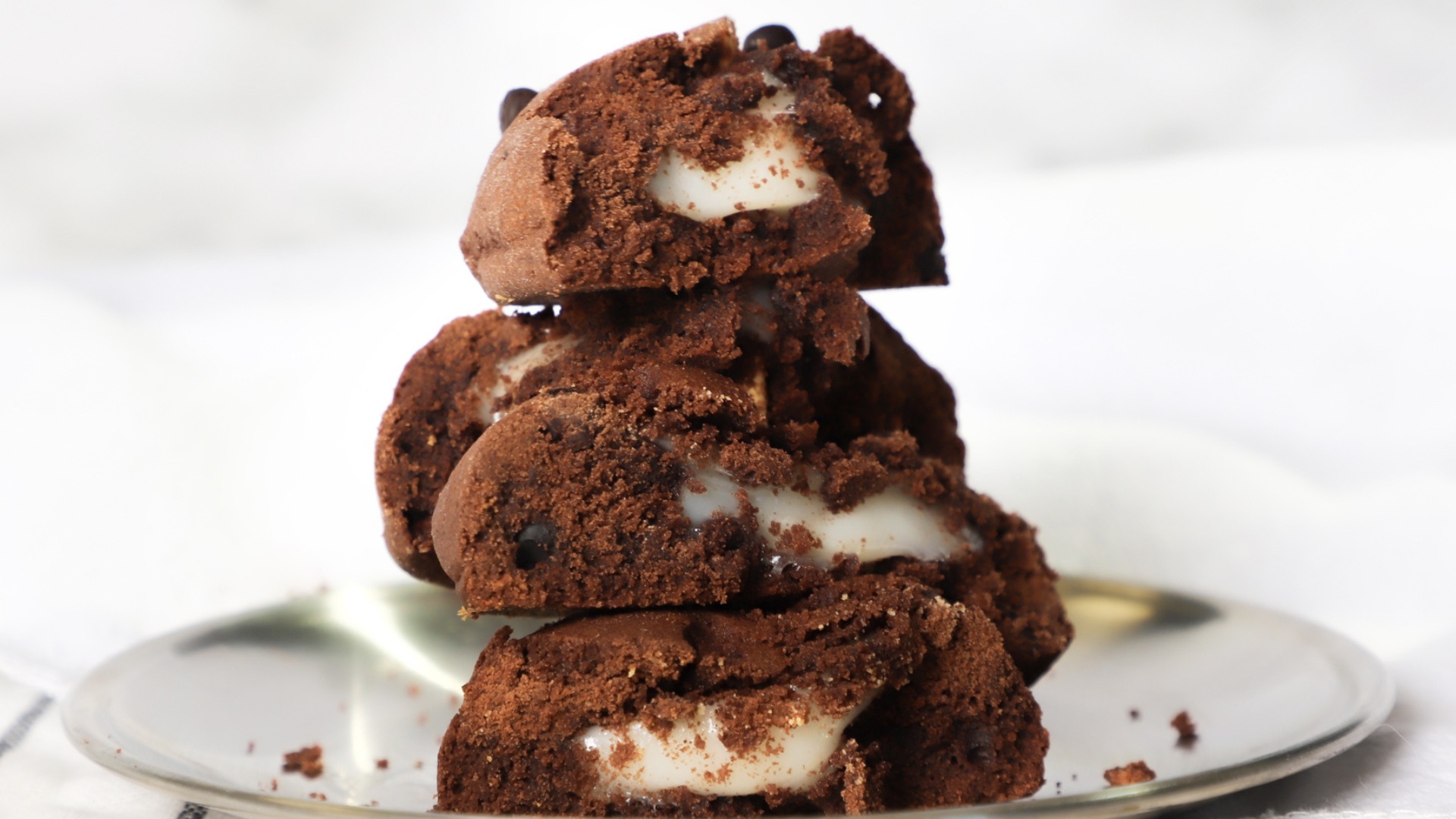Ingredients
🍡 A. Mochi Layer (Using ChewCo ASM-401)
-
ASM-401 MochiBake Mix – 240g
-
Egg white – 70g
-
Salad oil – 50g
-
Water – 400g
🍰 B. Chocolate Sponge Cake
-
TTM-168801 Soft Cake Mix – 185g
-
Cake flour (low-gluten) – 45g
-
Whole egg – 368g
-
Water – 70g
-
S.P. Emulsifier – 15g
-
Cocoa powder – 20g
-
Salad oil – 72g
🍮 C. Caramel Mousse
-
Granulated sugar – 120g
-
Maltose – 50g
-
Sea salt – 1g
-
Dairy cream – 150g
-
Water – 30g
-
Granulated sugar – 20g
-
Egg yolk – 80g
-
Gelatin sheets – 7.5g
-
Whipped dairy cream – 250g
🍫 D. Chocolate Mousse
-
Milk – 180g
-
Egg yolk – 52g
-
Granulated sugar – 40g
-
Dark chocolate – 200g
-
Gelatin sheets – 9g
-
Whipped dairy cream – 450g
✨ E. Chocolate Glaze
-
Granulated sugar – 160g
-
Glucose syrup – 160g
-
Water – 120g
-
Cocoa powder – 30g
-
Extra dark cocoa powder – 15g
-
Condensed milk – 160g
-
Gelatin sheets – 15g
-
Dark chocolate – 150g
Instructions
A. Base Layer Preparation
-
Gradual Mixing
Gradually add the ingredients in portions (as per the recipe), mixing each addition thoroughly before adding the next. -
Final Mixing
Once all ingredients are incorporated, mix until the batter is smooth and homogeneous. -
Pan Preparation
Pour the batter into a baking tray and spread it evenly using a spatula.
B. Sponge Layer (or Meringue Mixture)
-
Egg Preparation
Lightly beat the eggs to break them up uniformly. -
Whipping
Whip the egg mixture until it reaches a specific density — approximately 0.36 g/cm³ (indicating a light, airy consistency). -
Combining Ingredients
Gently fold in the remaining ingredients until fully incorporated, ensuring you don’t deflate the mixture. -
Layering & Baking
Pour the finished B mixture over the base layer (A) in the baking tray. Spread it evenly.
Bake at 200°C (top heat) / 140°C (bottom heat) for 15–20 minutes, or until the surface is lightly golden and springy to the touch.
C. Caramel Cream (Likely for a mousse or insert)
-
Caramel Preparation
Cook sugar until it reaches a golden-brown caramel stage. -
Incorporation
Carefully combine the caramel with a portion of the cream or other specified ingredients. -
Tempering & Heating
Heat the mixture over a bain-marie (double boiler) until it reaches 82°C, ensuring it does not boil. -
Add Gelatin
Add previously softened gelatin into the warm mixture, and stir until completely dissolved. -
Cooling & Final Mixing
Let the mixture cool, then incorporate the final ingredient (likely whipped cream or butter) until smooth and well-blended.
D. Custard or Cream Layer
-
Initial Heating
Bring the liquid ingredients (such as milk or cream) to a boil. -
Combining & Cooking
Mix in the egg mixture or starch base, then return the entire mixture to the stove and cook until it reaches 82°C, stirring constantly to avoid curdling. -
Further Mixing
Add ingredients 3 and 4 (possibly butter and flavoring) and mix well. -
Cooling & Final Addition
Let the custard cool slightly, then mix in the last ingredient (often whipped cream or gelatin) until fully incorporated.
E. Glaze or Final Coating (Used the Next Day)
-
Boiling Base
Bring the primary liquid base to a boil. -
Sequential Mixing
Gradually add ingredients 2 through 5 in the specified order, stirring well after each addition. -
Homogenization
Blend the mixture using a hand blender or emulsifier until completely smooth and emulsified. -
Resting
Let the mixture rest overnight for optimal consistency and flavor before using it as a glaze or final decorative layer.





